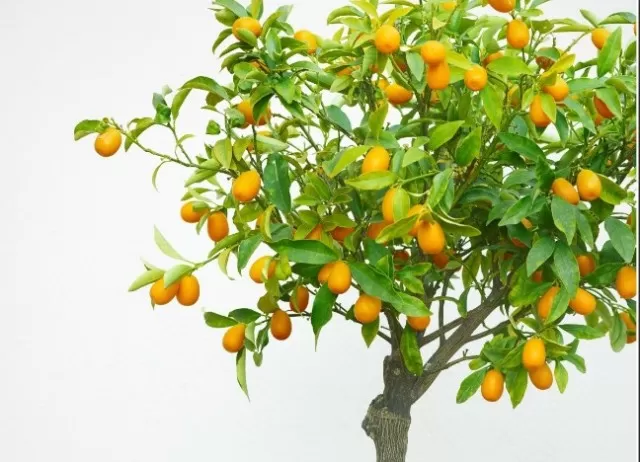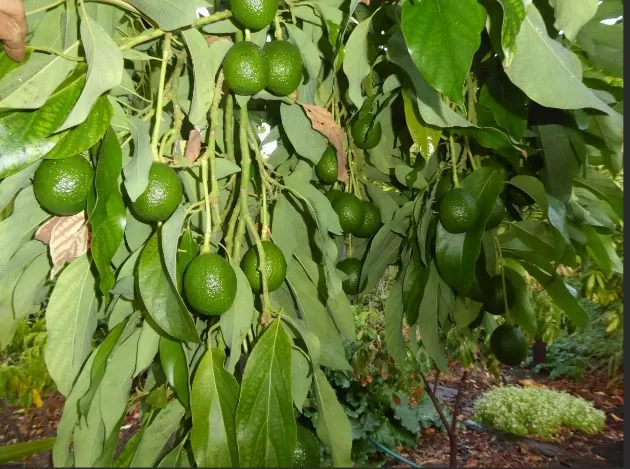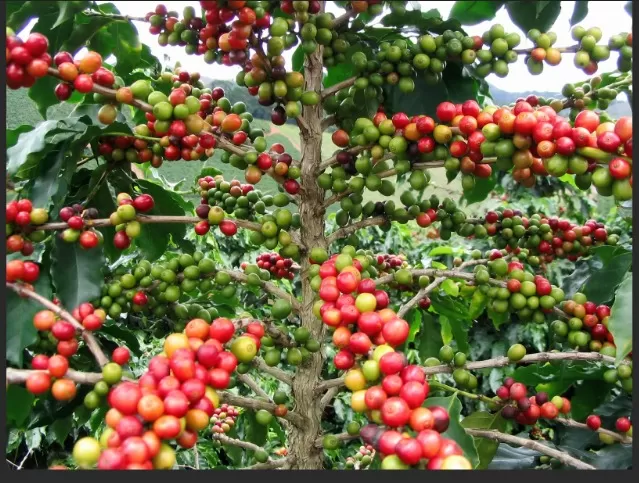Year-Round Indoor Fruit Trees: Freshness in Your Home. Tired of your houseplants just sitting idly, merely serving as decorative elements? Imagine if your indoor greenery not only added beauty to your home but also produced delicious and fresh produce.
With the right types of indoor fruit trees, you can transform your living space into a fruitful oasis, reaping the rewards of homegrown goodness.So, why settle for houseplants that simply look pretty when you can have indoor fruit trees that bring both beauty and bounty to your home? Explore the diverse world of indoor fruit tree options and embark on a journey of growing your own flavorful and nutritious produce, right where you live. It’s time to turn your living space into a lush, fruitful haven that nurtures both your body and soul.
Bountiful Choices: Maximizing Indoor Fruit Growth with Sunlight and Cultivation Techniques

To grow a fruitful indoor garden, ample sunlight is crucial, with a minimum of 8 hours per day being the ideal requirement.
Positioning your fruiting plants in the brightest areas of your home, such as a sunroom, sun porch, or near a large, unshaded south-facing window, will provide them with the energy they need to thrive.
While it may be tempting to start growing fruit trees from seeds, it’s important to consider the time and effort required for them to bear fruit.
Seedlings generally take longer to mature compared to grafted trees and may yield fruit of inferior quality. For citrus varieties, following Martha Stewart’s advice by opting for two- to three-year-old grafted, dwarf cultivars will yield the best results.
In general, most fruit plants will mature more rapidly from cuttings rather than from seeds, making it a preferable propagation method.
By making informed choices and providing the optimal conditions for your indoor fruiting plants, you can enjoy a bountiful harvest and delight in the rewards of your fruitful efforts.
Remember, a little extra care and attention go a long way in cultivating a thriving indoor fruit garden that brings joy year-round.
Acerola (Malpighia glabra): The Nutrient-Rich Barbados Cherry of Houseplants
Recognized as the Barbados cherry, Acerola stands out as a nutritional powerhouse among houseplants, boasting an astounding 30 times more Vitamin C in its red berries than commonly consumed citrus fruits.
With its ability to thrive in dry indoor conditions, this fruit tree presents a delightful addition to any indoor garden, gracing the surroundings with whirligig-like pink blooms in the refreshing embrace of spring, and bearing juicy cherries throughout the summertime.
One of the prime advantages of cultivating Acerola indoors is its remarkable adaptability to dry air, making it an ideal choice for those looking to grow fruit trees within the comfort of their homes.
By positioning it in the sunniest spot indoors, such as near a large south-facing window or in a sunroom, you can ensure that this delightful houseplant continues to flourish and bear fruit.
For optimal fruit production, it’s beneficial to offer Acerola a taste of the outdoors during the warmer months.
Placing it on a sunny patio or a well-lit balcony when temperatures soar beyond 80 degrees Fahrenheit will encourage the best fruit set, rewarding you with an abundance of cherry-like treasures.
With its exceptional nutritional content and ease of indoor cultivation, Acerola proves to be a rewarding and enriching addition to any fruit enthusiast’s collection.
Revel in the vibrant colors, luscious taste, and healthful benefits that this cherry of a houseplant brings into your life throughout the seasons.
Avocado (Persea americana): A Houseplant Cautionary Tale and the Path to Fruitful Delights

For years, glossy-leaved avocados have captured the hearts of indoor gardeners as popular houseplants.
However, Laurelynn and Byron Martin, authors of Growing Tasty Tropical Plants, issue a word of caution regarding pit-grown trees – they are, indeed, the pits! If you’re hoping for a bountiful harvest or superior fruit quality, pit-grown avocados may disappoint, as they seldom bear fruit, and when they do, the results can be underwhelming.
But fear not! There’s a solution to cultivating avocado houseplants with delightful fruits.
The answer lies in the self-pollinating cultivar ‘Day,’ which emerges as the undisputed champion among avocado varieties when it comes to bearing fruit in a pot, even as a small plant. Opting for ‘Day’ ensures a greater chance of success, granting you the joy of homegrown avocados to savor and share.
To ensure the healthy growth of your ‘Day’ avocado, proper care is essential.
First and foremost, select well-drained soil, as avocados are susceptible to root-related issues. This precautionary measure will promote optimal root health and overall plant vitality, increasing the likelihood of a thriving and fruitful avocado tree within your home.
Embrace the adventure of nurturing your avocado houseplant, and with the wise selection of the ‘Day’ cultivar and diligent care, you may soon relish the satisfaction of harvesting your very own avocados – a delectable reward that adds an extra touch of green and goodness to your indoor garden.
So, seize the opportunity to embark on this fruitful journey, and your avocado houseplant will undoubtedly become a delightful and fruitful centerpiece of your home.
Calamondin Orange (Citrus x microcarpa): A Zesty Indoor Delight for All Seasons
Amidst the limitations of not owning a greenhouse, fear not, for the Calamondin Orange comes to the rescue as the ultimate choice for indoor gardeners.
Renowned for its ease of cultivation and popularity, this charming orange tree adds a touch of exotic beauty to any indoor space. With its alluring fragrant white blooms and petite, lime-sized orange fruits, this delightful plant offers a near-constant harvest throughout the year, providing a delightful zest to your indoor garden.
The origin of the Calamondin Orange is believed to be a fascinating hybrid, resulting from the marriage of a kumquat and a tangerine, blending the best of both worlds into one delightful package.
Its dainty, sour fruits are a culinary delight, perfect for adding a tangy twist to dishes and beverages alike.
For those seeking a striking visual variation, the variegated variety (Citrus x microcarpa ‘Variegata’) stands out with its distinctive stripes, adding a unique and vibrant touch to your indoor oasis.
In nurturing this indoor gem, keep in mind that Calamondin oranges prefer cooler temperatures during winter.
Aim to maintain daytime temperatures around 65 degrees Fahrenheit and drop to approximately 55 degrees Fahrenheit at night. Such conditions will provide the perfect environment for your citrus treasure to thrive and continue to gift you with its bounty.
As you delight in the evergreen beauty and zesty charms of the Calamondin Orange, your indoor garden will flourish with the vibrancy of nature’s gifts, enhancing the ambiance of your living space and infusing it with a refreshing citrusy spirit all year long.
Coffee (Coffea arabica): From Bean to Brew – A Rewarding Journey for Aspiring Growers

For beginners dipping their toes into the world of fruit plants, the coffee plant stands out as an excellent choice.
With a little care and attention, this remarkable plant can flourish and surprise you with its first delightful harvest, brimming with beans, within just a year. This “good Joe” will undoubtedly be a source of joy and satisfaction for any coffee enthusiast.
What makes coffee even more appealing is its adaptability to different conditions.
It tolerates dry air well, making it well-suited for indoor cultivation. Unlike many other fruit plants, it can thrive in partial sunlight, so finding the right spot for it in your home becomes a breeze.
Even better, coffee doesn’t adhere to traditional flowering seasons. Instead, it blossoms off and on throughout the year, gracing your space with its fragrant white blooms that give new meaning to the phrase “wake up and smell the coffee.”.
As the green berries emerge and gradually ripen to a vibrant red hue, the anticipation of the coffee beans’ maturation grows.
However, the process doesn’t end there. To transform the coffee berries into the aromatic beverage we adore, some essential steps must be taken.
Skinning, soaking, and drying the beans are all crucial parts of the intricate coffee-making process.
Embrace this rewarding journey from bean to brew, and as you witness the transformation of your coffee plant into a thriving source of aromatic joy, you’ll truly appreciate the craftsmanship involved in every cup of coffee consumed.
Cultivating coffee at home offers a deeper connection to the beverage we cherish, fostering an appreciation for the efforts of coffee growers around the world.
So, venture forth with curiosity and enthusiasm, and as you nurture your coffee plant, you’ll embark on a journey that culminates in the most delightful cups of coffee, elevating your daily rituals to a whole new level of satisfaction.
*The information is for reference only.